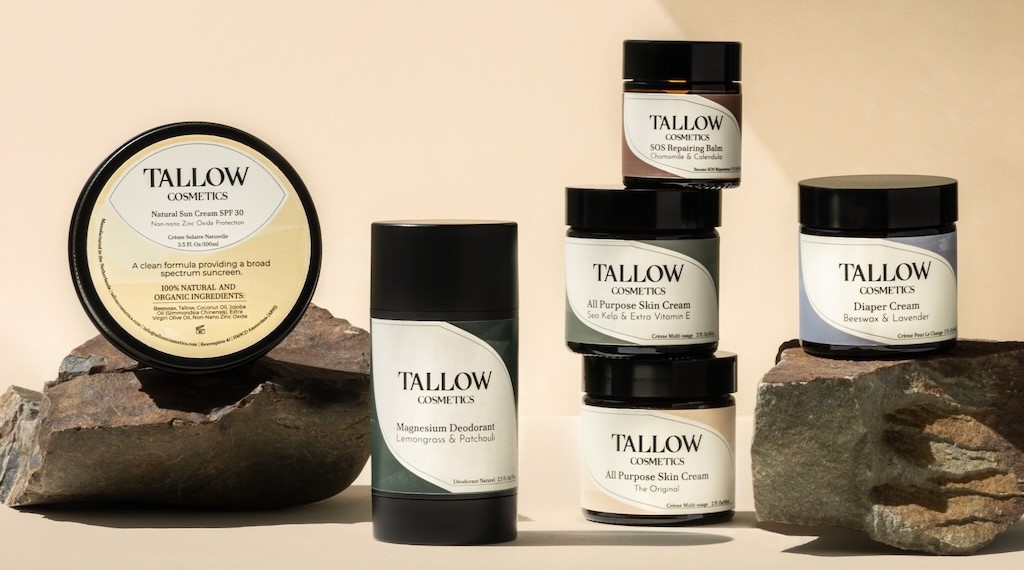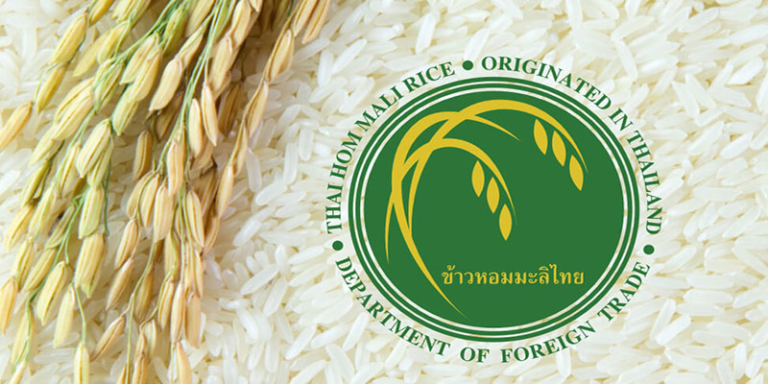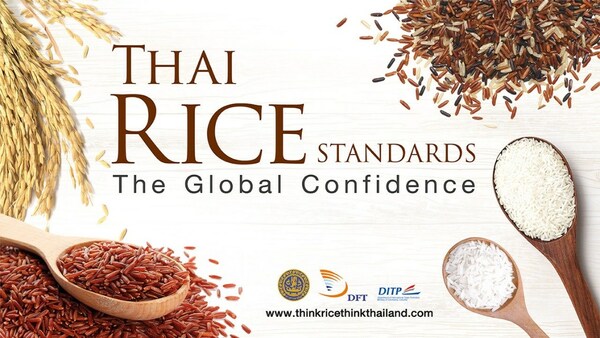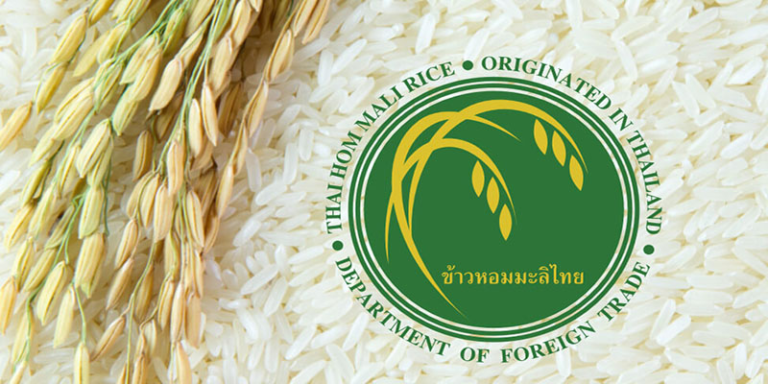White Jasmine Rice - Thai Hom Mali květinové aroma a chuť máslového popcornu - 1 kg
 +158 Kreditů to Bonus programme
+158 Kreditů to Bonus programmeWhy buy
- Thai Hom Mali rice is probably the most famous type of premium jasmine rice in the world.
- It is characterized by long grains, it is moist and soft after cooking - qualities for which it is recognized worldwide by all cooks.
- Another unique feature is the aromatic floral scent and buttery popcorn taste.
- This rice was first cultivated in Thailand, which is still home to the finest Thai rice, Hom Mali.
- It is a source of vitamin B1, B2, niacin and minerals such as iron, calcium and phosphorus.
- Due to its very specific growing requirements, it can only be harvested once a year, during October to November.
- In this respect, it is the most demanding of all jasmine rice varieties.
Mah Boonkrong 's rice is 100% jasmine hom mali (AAA grade and organic quality) and no other cheaper rice is mixed in! Fully complies with the regulations of the Thai Ministry of Commerce.
The Thai Hom Mali Rice logo is a quality mark awarded by the Thai Ministry of Foreign Trade (see picture). The rice is registered with the Thai Ministry of Intellectual Property to clearly demonstrate that the rice variety originates from Thailand and its quality meets the relevant standards set by the Ministry of Commerce. Source : https://thaiembdc.org/2022/10/06/thai-hom-mali-rice-certificate/
If you are buying jasmine rice and this logo is not on the product packaging, it is not true Hom Mali. Most likely it will be a mixture of several varieties of inferior jasmine rice.
How to rate Hom rice
Not all jasmine rice is the same. There are rice called Hom Mali that do not actually meet the Thai Ministry of Commerce regulations to be labelled as such.
In order to be labelled as Hom Mali premium quality rice, it must comply with the notification from the Ministry of Commerce in order to be authorised to be labelled and exported as Hom Mali genuine grain.
There are also different types of Hom Mali rice, such as 100% (minimum 92% purity), mixed 80:20 and 100% broken (A1 Extra Super).
The AAA grade usually defines the highest export grade, which is 100% with a minimum purity of 92%. Anything with a lower content is usually broken or mixed.
Prescription of THAI HOM MALI RICE as a standardized commodity and standards of THAI HOM MALI RICE, B.E. 2544 (2001)
This list is not an exhaustive list of requirements, but it gives an idea of the rigour against which rice must be judged before it is declared to bear the royal name 'Hom Mali'.
- contains at least 92,0 % THAI HOM MALI RICE*
- with a moisture content not exceeding 14,0 %
- with the general characteristics of long-grain rice with a naturally low chalk content
- without live insects
- with the following grain dimensions: the average length of the whole grain, excluding fractions, must not be less than 7,0 mm
- the ratio of the average length to the average width of the whole grain, excluding fractions, must not be less than 3,2:1
- with the following chemical characteristics: the amylose content must not be less than 13,0-18,0 %
- at a moisture content of 14,0 %, the alkaline dispersion value of white rice kernels is 6-7
How to cook and use Hom Mali
- Hom Mali rice has the authentic taste, aroma and silky texture of the best restaurants in East Asia.
- Thai steamed jasmine rice is an exceptional base for hearty soups and stir-fried dishes, or combined with fried, baked and grilled proteins.
- Pre-prepared Thai Hom Mali rice can also be used as a great base for fried rice dishes.
To get perfectly cooked Thai Hom Mali rice, first rinse it thoroughly (feel free to let it soak for a while) and add 1 part rice to 1.5 parts water to a pot, rice cooker or pressure cooker and cook to the desired consistency.
The best way to cook this and most types of rice is, of course, in a good quality rice cooker. The pot is also convenient, but thanks to the fuzzy cooking logic in electronic rice cookers, it is possible to fine-tune the way the rice is heated to really bring out its flavour, aroma and texture to the maximum.
These types of rice cookers do not just cook the rice, but use cooking stages such as steaming, simmering, graduated heat curves to cook the rice gently and lovingly while preserving its flavor, texture and aroma.
If you don't know how to use a rice cooker properly, which involves various stages of heating, cooling, resting and steaming, you will drain the rice of all its nutrients because you will usually overcook the rice. This is definitely not the correct way to cook rice of this caliber, so beware.
Ingredients
Jasmine rice (Hom Mali) long grain semi-hulled, product of controlled organic farming.
Nutritional data
per 100g of product
Energy: 1486 kj/355 kcal, Fat: 0,5g, of which saturates: 0,2g, Carbohydrates: 80,4g, of which sugars: 0,1g, Fibre: 0,8g, Protein: 7,3g, Salt: 0,01g.
- Storage: in a dry room at temperatures up to 25 C and relative humidity up to 70%.
- Made and packed in Thailand/Thailand.
- Weight: 1Kg/1000g
- Country of origin: Thailand.
- Agricultural production outside the EU.
- Control organisation code: TH-BIO-121.
Thailand's rice standards create global confidence in the quality of the national crop
In 2019, Thailand's Ministry of Foreign Trade introduced a project called "Think RICE, Think THAILAND", which aims to encourage the international community to pay attention to consumer health, while raising awareness of the national crop by providing a broader range of knowledge - from the history of national agriculture, standards to the quality of Thai rice.
As the world's leading rice exporter, Thailand introduced its first Thai Rice Standards on 20 May 1957 with the issuance of the Ministry of Commerce's announcement on the introduction of Thai Rice Standards.
Subsequent amendments included the 1974 Thai Rice Standards, the 1997 Thai Rice Standards, and the 2016 Thai Rice Standards, which established the Thai Hom Mali Rice Standards, the Thai Fragrant Rice Standards, and the Thai Rice Standards.
Most recently, Thai standards for coloured rice were introduced in early 2019. These now serve as quality benchmarks for Thai rice with definitions of minimum composition and maximum limits.
The above Thai rice standards apply not only to the export of rice from the country but also to the domestic rice trade and other specified matters. These criteria facilitate trade negotiations: it is not necessary for buyers and sellers to give detailed specifications in their agreements, including the variety and quality of rice, but it is sufficient to refer to existing guidelines for the specific type of rice they wish to trade.
In order to determine whether the quality of the traded rice conforms to trade agreements or established standards, a random sample of rice must be analysed. If the sample passes inspection, the entire lot of rice is considered to conform to the accepted standards; if the sample fails, the entire lot is considered to be non-conforming. This sampling method is an international practice worldwide.
Substandard rice can never be exported because it does not meet the provisions of the agreement made with foreign buyers. Domestically, rice that deviates slightly from the standard is still sold, albeit at a lower price, based on a set of predefined criteria. However, if the sample is found to deviate too far from the requirements, the entire batch will be returned to the place of origin.
The Thai Rice Standards, which have been in use since 1957, have never prescribed any guidelines for sampling and inspection, except for the Thai Hom Mali Rice Standards, which established such guidelines in 1997. Therefore, sampling and quality control of Thai rice for export followed overseas practices and local procedures.
For example, samples shall be taken randomly from at least 2-3 % of the total number of bags in a batch. This sample size is comparable to ISO and IRRI requirements, which dictate that the number of bags taken should be the square root of the total number of bags in the batch.
On the basis of the above information, good quality rice is rice that buyers at home and abroad are willing to accept and rice that meets the quality requirements. The determination of the quality of rice does not depend at all on an individual's personal perception, but on the results of a scientific analysis of random samples taken by a neutral party. Samples must be completely random, not deliberately selected.
The introduction of these Thai rice standards increases the potential for Thai rice exports. It allows buyers greater options for purchasing and importing Thai rice, not only the unique strain of Thai fragrant rice known as Thai Hom Mali rice, but also many other types and varieties to suit the needs of consumers in importing countries. These standards also increase consumer confidence in the quality of Thai rice.
Read more on this topic
Discover low carb or more energy, less sugar
Enhance your workout with the right and effective supplements
Additional parameters
| Category: | Mah Boonkrong Rice |
|---|---|
| Certification: | USDA Organic |
| Výrobce: | PRG Corporation Public Company Limited, 5th Floor Zone A, MBK Center, 444, Payathai Road, Wangmai, Pathumwan, Bangkok, 10330 |
| Země původu: | Thajsko |
| Vhodné pro: | Bez lepku-GMO Free-Vegan-Sugar Free-Lactose Free |
| The item has been sold out… | |
Be the first who will post an article to this item!
Thajská rýže Hom Mali
Světově proslulá thajská jasmínová rýže Hom Mali je nejdůležitější aromatickou rýží pocházející z Thajska - má ochrannou známku a nelze ji pěstovat nikde jinde na světě.
Podobně jako se na vinicích pěstují hrozny a kvasí víno, pěstují se i zrna thajské jasmínové rýže nejvyšší třídy pouze v určitých oblastech Thajska. Většinou se jedná o oblasti severovýchodních provincií, jako jsou Ubon Ratchathani, Burirum, Sisaket, Roi Et, Yasothon a Surin.
Rýže Hom Mali má chuť, vůni a hedvábnou strukturu, která je autentická jako v nejlepších restauracích východní Asie. Je dokonalým doplňkem kari, smažených pokrmů a dalších thajských a asijských jídel.
Všestranné použití této rýže je výjimečné. Není příliš lepkavá ani příliš suchá. Při vaření také vykazuje výrazná zrna. Chuť ve vašich ústech je prostě WOW.
Tyto regiony mají vhodné přírodní podmínky, jako je dostatek slunečního svitu během celého roku, množství dešťů a přístup k nejkvalitnějším zrnům jasmínové rýže, která se dá pěstovat skutečně pouze v těchto provinciích.
Zemědělci v této oblasti jsou v pěstování jasmínové rýže na špičkové úrovni a je to vidět, protože rýžovary v této oblasti produkují trvale oceňovanou rýži, kterou jim závidí pěstitelé rýže na celém světě.
Výrobce a standard kvality
Thajská společnost Patum Rice Mill and Granary Public Company Limited (PRG) vyrábí a distribuje balenou thajskou rýži Hom Mali pod značkou "Mah Boonkrong" a "Mah Boonkrong Plus".
Tato společnost je předním výrobcem balené thajské rýže Hom Mali v Thajsku a prvním výrobcem rýže, který získal certifikaci GMP.
Kromě toho také na obale této rýže najdete logo thajské vlády (Ministerstvo zahraničního obchodu), které garantuje, že tato rýže byla vypěstována podle správné zemědělské praxe pro odrůdu jasmínové rýže Thai Hom Mali, která je stanovena podle TAS 4400: Thai Agricultural Standard s názvem Správná zemědělská praxe pro rýži Thai Hom Mali.
Rýže je certifikována jako bio od USDA Organic a EU.

.jpg)



























































.png)

















